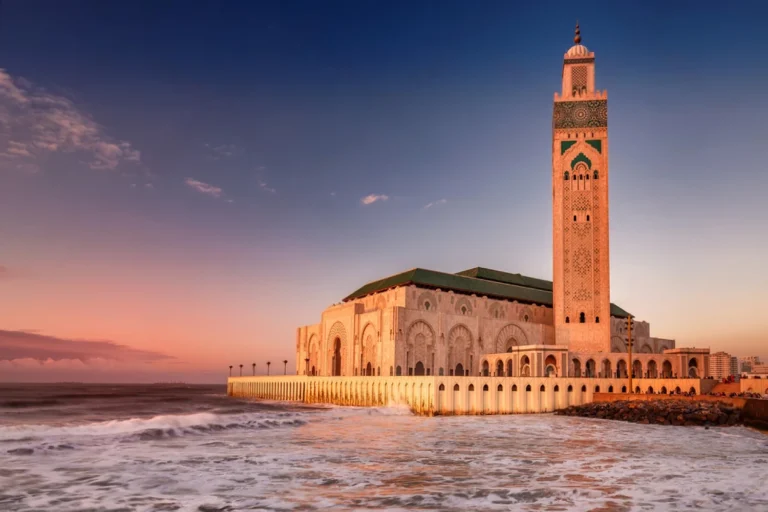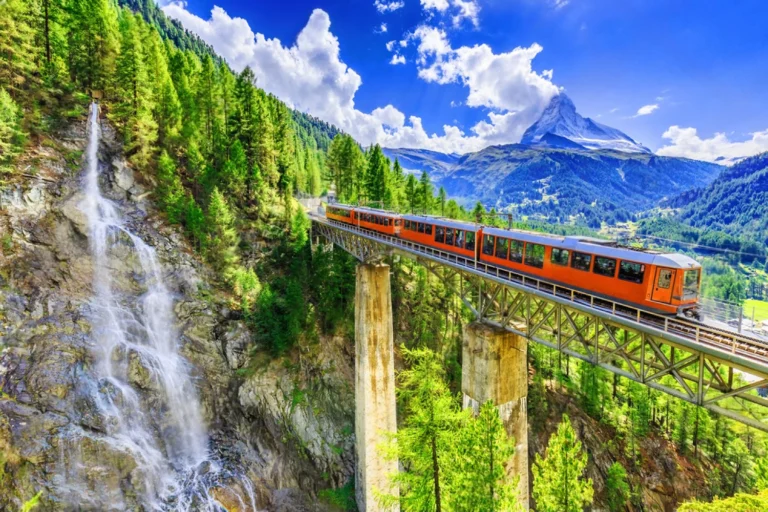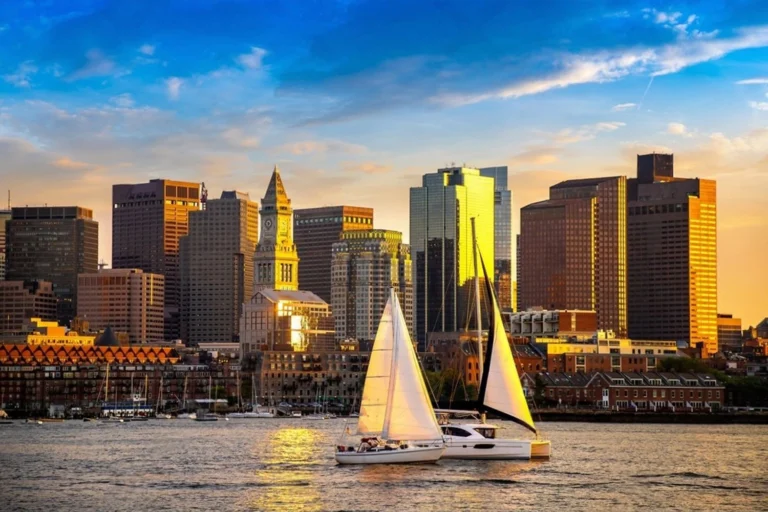New York: 30 Unexpected Stories Hidden in the Noise

New York feels like a well thumbed book, its most generous lines tucked into creases you notice only when you slow down. There’s the soft warmth of bakery air at dawn, the low murmur rising from a subway grate, and streetlights glazing wet pavement in a quiet glow. In these small, almost private moments an open doorway, a nod from a stranger, a cool scuffed railing under your palm something truer comes into view. Come with me to wander the margins, where hidden stories and overlooked details gather, and the city’s deeper spirit makes itself known.
A city that speaks in more than 800 voices
Some days the sidewalk hums like a choir warming up. On one block you catch Bengali alongside Tagalog, then a soft Russian from an open window, and a dozen more I can’t name. I love how New York lets you travel by ear on a single subway car, cumin drifting from someone’s takeout, sweet pastry air from a paper bag, and a shuffle of stories settling into plastic seats.
It’s wild to remember the number behind it more than 800 languages yet what stays with me is how ordinary it feels, the way strangers sit side by side and laugh at the same joke. They call this the most linguistically diverse city on the planet, but to me it’s simply a street of neighbors; I keep a few greetings like old subway tokens, little proofs that we can find a shared word.

A Whisper Crosses Grand Central Like Magic
I still smile at the memory of a murmured hello traveling farther than any shout, threading through the hum of rush hour like it knew exactly where to go. The floor buzzed with footfalls, the air smelled faintly of coffee and rain soaked coats, and somewhere a saxophone tugged at the edges of the noise. Then soft as a secret slipping along a brass rail words arrived perfectly formed on the opposite corner, as if the room itself had leaned in to listen.
In Grand Central Terminal, the tiled arches do this improbable thing: they turn whispers into warm little messengers, a quiet telephone made of tiles. You can see it in the faces around you the quick, puzzled glance from a commuter, the grin that breaks when they realize a faint voice carried clear across all that marble and motion. Under the glittering constellations and schedules clicking forward, there’s this pause, this pocket of wonder that hushes the hurry.
I love that a piece of early twentieth century craft still makes space for tenderness in the middle of a commute. In a place built for departures and deadlines, it offers an invitation to speak softly and be heard, to remember that connection can be simple and surprising. It’s a small trick, but it feels like the city letting you in on something gentle, as if to say: even here, there’s room for quiet magic.
https://en.wikipedia.org/wiki/New_York_City
Lombardi’s: Where the First Slice Still Burns
Some places feel like they’re still warm from 1905. At Lombardi’s, the coal oven doesn’t just bake; it breathes an old hearth humming behind the counter. In Little Italy, where the city’s first pizzeria took root, the air wears a soft perfume of char and tomato, and the crust arrives speckled, a crisp edge giving way to a tender middle. I remember how the first bite tasted both simple and stubborn, like history refusing to fade.
People who swear they know the city best say you don’t truly get it until you’ve folded that coal oven slice with your hands after midnight, standing on a buzzing corner while taxis hiss by. I get it now: the cheese loosens, the tomato brightens, your fingers shine with oil, and the noise around you slips into the background. For a moment you belong, because some things stay warm while everything else keeps moving.

Track 61, the Waldorf’s hidden backdoor for presidents
I love how some grand places keep a quiet back way no one talks about. Beneath the Waldorf Astoria, there’s Track 61, the private platform where Franklin D. Roosevelt could arrive and depart without fanfare. I picture the air down there smelling of oil and old iron, the soft hush of lobby carpets above and the cold rails below, two worlds pressed close.
For years it was the worst kept secret among the glittering crowd doormen, drivers, and people who always seem to know more than they say. Some whisper you can still spot the old armored railcar tucked under the streets, dust thick on the metal, its windows dimmed like a memory parked in the dark.
I remember hearing about it and feeling a small thrill at how glamour and grit sit together. The whole place suddenly seemed different, like a tuxedo with a hidden pocket elegant on the surface, practical in its bones. Maybe that’s the charm of it: knowing that even the brightest rooms have a discreet way home, and the city keeps its secrets right beneath your feet.
Manhattan’s narrowest home, a sliver full of dreams
I love how some places play with scale, like they’re winking. At 75½ Bedford Street, the house is just over nine feet wide, the kind of narrow where your shoulders instinctively tuck. Warm brick, a modest door, maybe a flower box everything pared down, but inviting, like it’s saving a seat for someone who needs it.
People say Edna St. Vincent Millay lived there, and I want that to be true. It suits the idea that brilliance doesn’t require a grand room just a corner where a line can land and echo. Standing on that quiet stretch of Bedford, I felt a small, stubborn kind of hope: in a city that loves to sprawl, the clearest ideas don’t need more than a few feet of room.

The day all New Yorkers moved together
I still laugh at the thought: May 1st and the sidewalks lined with lamps, rugs, and lopsided dressers. An older neighbor once described the squeak of handcarts, the cottony smell of mattresses in the sun, piano keys clacking as if testing the air. Millions of neighbors trading keys on the same bright morning simple, ridiculous, kind of beautiful.
They called it Moving Day, and it lasted into the 1940s the one day the whole city turned a page together. In New York, chaos somehow becomes community; I can picture the streets moving like a tide of chairs and mattresses, and landlords quietly losing their minds. What gets me is the gentleness inside the commotion: doors held open for strangers, a teapot carefully wrapped, the shared belief that spring means a fresh start, not just for one person, but for everyone at once.
Tiny crustaceans in the tap, city secrets revealed
I still laugh at how faces scrunch when someone says the word copepods, like the glass in your hand just learned a new trick. Tiny, harmless crustaceans drifting through the tap – the idea makes some people shiver, even as the water smells faintly clean and metallic, cool against the lip. To me, it feels like a tidepool hidden in a glass, proof that the ordinary can be quietly strange.
What I love is that they’re not villains at all; they help keep the water clear, little custodians working where we can’t see. It’s so perfectly New York City: a place that insists on being alive in every corner, even inside the plumbing. Once I heard about them, the pipes’ soft knocking sounded almost companionable, like the city clearing its throat.
There’s a kind of comfort in it, honestly – the reminder that the world doesn’t have to be pristine to be good. Some folks squirm, and I get it. But I’ve come to think of those copepods as a whisper from the wild, saying the city’s wild heart flickers in the least expected places, even the water we drink without a second thought.

When New York’s Taxis Turned Brilliant Yellow
Funny thing I used to think they’d always been yellow. But the first cabs wore red and green, until 1912, when someone realized a bright yellow cut through the street’s blur best. I remember a misty afternoon, beads of rain pooling on chrome, a horn calling above the hiss of a grate the kind of day when colors go dull. That yellow still jumped like a small sun.
In New York, that choice turned into an identity the shade you can spot from a block away, the moving certainty that you’re not alone in the rush. It’s practical, sure, but it also feels kind: a lighthouse on wheels when the day is noisy or the sky is heavy. Funny how a single color, picked for visibility, ended up stitching itself into the city’s memory, the most recognizable companion in the endless traffic.
New York’s hidden island of the unclaimed and unheard
I always get quiet when I remember there’s a small, low strip of land that few ever see, yet it holds more people than most towns. Hart Island, they call it. Since the 1800s, more than a million unclaimed lives have been laid there in common graves, stacked carefully and without fanfare, the way a city does something difficult because it must. It feels like a closed book with a million untold chapters.
I remember a chilly day when the wind off the water carried a salt hush, and someone pointed toward a thin green line that barely lifted from the gray. You couldn’t go there, they said it’s closed to the public. The distance itself felt like part of the story, a curtain the island keeps drawn, not to exclude, but to protect what rests behind it.
What moves me is how this place holds the city’s silence with a kind of stubborn tenderness. In a town that shouts and shines, there’s this quiet corner keeping vigil for those who slipped past the noise. It’s haunting, yes, but also strangely kind the idea that even if no one claimed you, the island did, and the city made room.
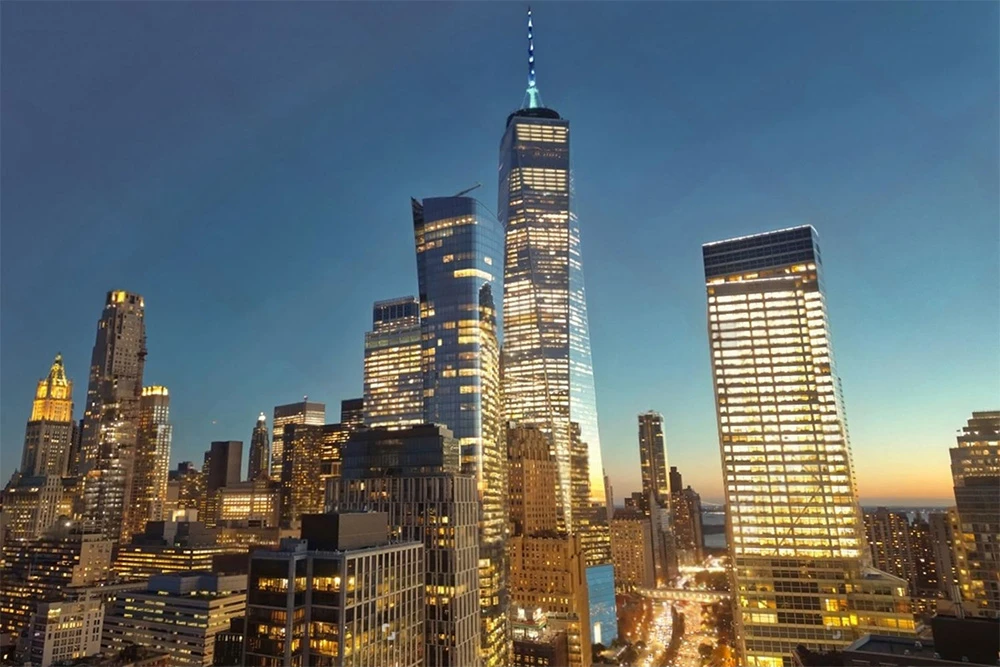
A sleepless subway hiding a second, secret city
There are nights when the rails hum and the air smells of warm metal and old rain. The car glides through a patch of darkness and, for a moment, old tiles appear arched ceilings, a pale mosaic, a platform that doesn’t exist on any map. I remember the small hush that follows, the kind that makes you feel time has paused.
Everyone knows the subway never sleeps, but under that certainty is a quieter world: abandoned stations, secret tracks, and even a tucked away platform once reserved for President Franklin D. Roosevelt. It feels less like transit and more like a library of forgotten rooms, each one holding a fragment of the city’s bravado and its shyness. I love the idea that everyday commutes skim the surface of stories still waiting down there.
Maybe that’s why New York feels endlessly alive to me not just for what it shows, but for what it keeps hidden. The trains keep time like a steady heartbeat, and between the beats you sense possibility: proof that mystery can live right under our feet, riding along with us in the dark.
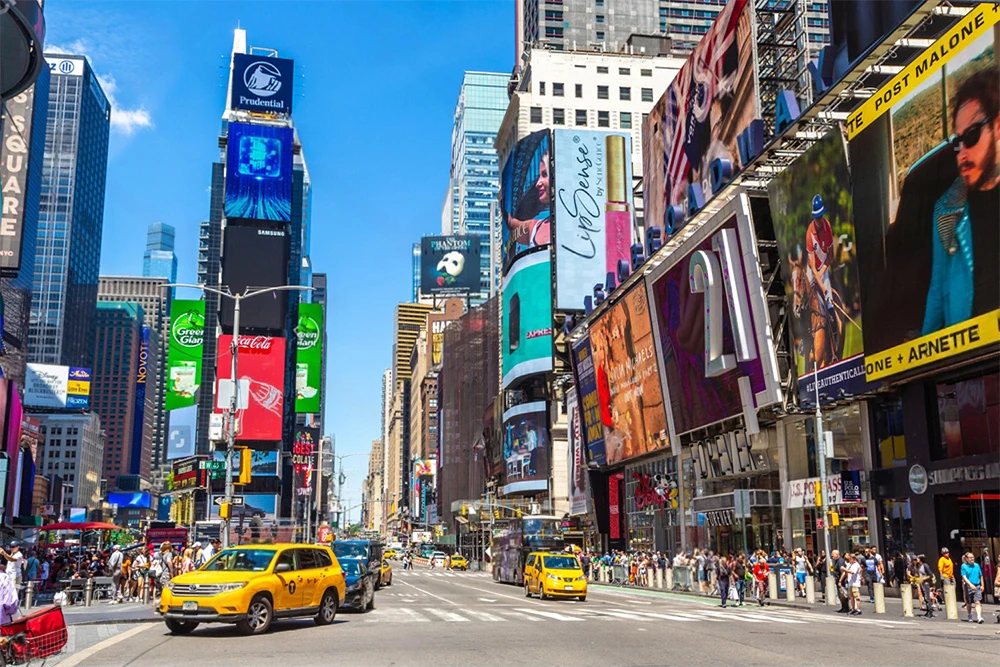
An elm lined stage for seeing and being seen
I always find myself straightening my shoulders when I step onto that long, straight path. Central Park’s Mall wasn’t just a walkway; it was laid out like an outdoor stage for society to parade – a place to see and be seen. Under the elms, their branches arcing like a quiet proscenium, you can almost hear the rustle of silk and the hush of deliberate footsteps.
Today it’s families with strollers, buskers testing a tune, friends drifting in and out of shade that smells faintly of damp bark. A saxophone slips between the benches, pigeons gossip, and someone in a bright coat becomes, for a second, the lead on a runway nobody announced. It’s funny how a straight path can hold so much theater without trying.
Once, near dusk, I caught myself slowing just to let the scene pass by me, familiar and tender. That lingering urge to gather, to watch and be watched, feels less about vanity and more about belonging – the park reminding you that being part of the scene is its own kind of home.
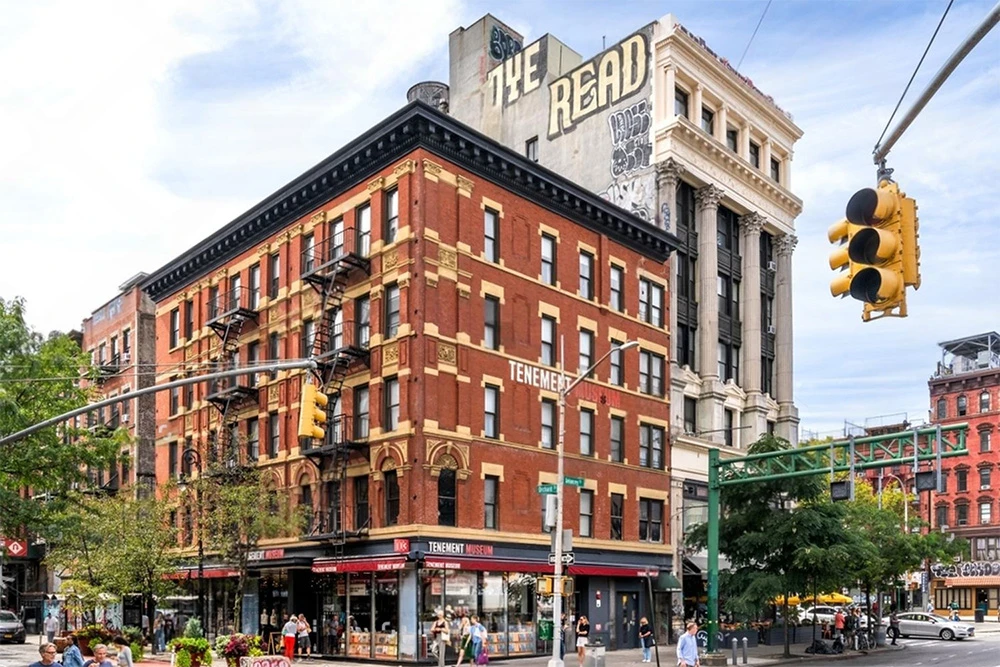
The fourth longest boardwalk where time finally loosens
Funny how a simple stretch of wood can hush a city. The planks offer a gentle clack, gulls tilt and drift, and the air tastes faintly of salt. Even the skyline feels farther away, like someone turned the volume knob down and let the day breathe.
It’s the fourth longest boardwalk in the city, which feels like a quiet boast big on paper, soft in person. Out on Staten Island, the water opens wide, freighters slide by like slow thoughts, and I catch myself matching their pace without meaning to. There’s a point where the harbor fills your view and you wonder, honestly, if you’re still in New York at all.
I remember an ordinary afternoon there when being unhurried felt natural, like finding the rhythm you’d been missing. It made me kinder to myself, to strangers brushing sand from their shoes and reminded me that even a restless place keeps patches of calm, especially where the land meets the water.
A skyscraper with its very own ZIP code
It still makes me smile to think an address needs its own number-10118. Imagine the daily tide of envelopes and parcels, the soft scuff of mail carts on cool marble, the faint ink and paper smell under warm brass lights.
The Empire State Building feels like a whole small city stacked on itself, so of course it earned its own ZIP. I picture love letters trembling with courage, fan packages padded with joy, and stern business envelopes carrying decisions that ripple through lives. All of them funneled to one place, as if everyone agreed that hope should be delivered to a single front desk.
Maybe that’s the quiet city magic I love: even steel ends up holding our feelings. A ZIP can become a lighthouse for paper dreams, and 10118 proves it. I remember whispering the number once, the way you repeat a name you’re fond of, just to feel its weight.

When a slice equals a subway ride
It still makes me smile that, for decades, the price of a single slice has shadowed the cost of a subway ride, almost to the penny. Economists scratch their heads, but locals treat it like a quiet handshake between cheese and steel rails an inside joke that somehow keeps its timing. In New York City, that balance feels like a small promise: fuel for the body costs the same as the permission to keep moving.
I remember the heat of a slice warming a flimsy paper plate, the sweet salty smell of tomato and char, and the metallic breath of the station drifting up the stairs. Something about that match bite and swipe makes the city feel fair, like a little seesaw holding steady in the wind. Travelers always ask what to try; I tell them this is the city’s simplest equation, best experienced twice in one afternoon: a taste that moves you, and a ride that tastes like the day.
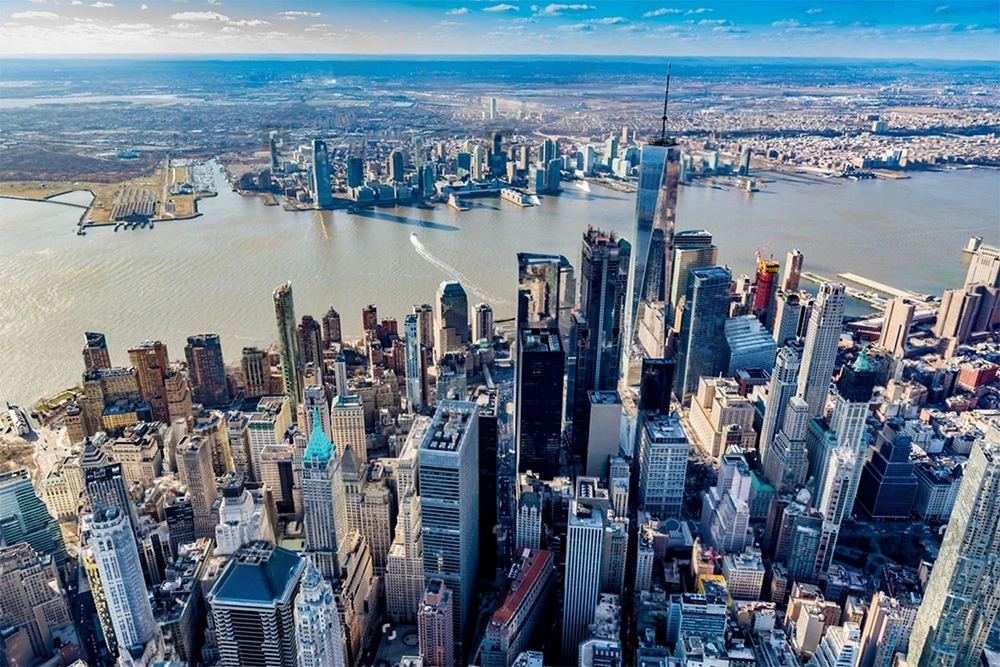
New Amsterdam echoes beneath today’s restless streets
Some days the city feels like it speaks in accents. You hear it when Harlem softens its vowels into Haarlem and Brooklyn hints at Breukelen, while steam curls up from the subway grates and the wind off the river tastes faintly of salt. It’s a small thrill, that tug of an older story under the crosswalks and neon.
I remember learning that New York was once called New Amsterdam, founded by the Dutch in 1624, and feeling the entire map tilt a little. Suddenly the names weren’t just labels; they were little anchors for the heart, keeping modern life moored to something older. It made sense of the city’s personality confident, patched together, generous with its past even as it sprints toward tomorrow.
What I love is how those syllables keep us company. Harlem and Brooklyn don’t just mark neighborhoods; they whisper that today’s sidewalks grew from colonial roots, that we’re walking on a story that refuses to end. It’s comforting, really: even in all this noise and light, the past still hums beneath our feet.

Honking is Quietly Illegal, Yet Everywhere Here
I still laugh whenever I remember that honking is technically illegal here. On Fifth Avenue the sound ricochets off glass towers sharp bleats, drawn out wails, weaving with the hiss of steam and the sweet burnt smell of chestnuts.
They passed the rule to give our ears a break, and I love the idea. But everyday life keeps swelling; it’s an orchestra forever tuning, never starting the song. Part of me bristles, part of me softens, because the noise is both impatience and heartbeat.
Maybe that’s the secret: the law feels more like a whispered wish for quiet than a command. I remember pausing at a crosswalk as the blare thinned for a heartbeat and other sounds slipped through footsteps, a door hissing, winter fabric brushing sleeves. In that narrow hush, it makes sense that someone tried to make room for calm, even on this loud, glittering street.
When fog hid a plane, steel still stood
It sounds like the kind of story you only believe when the air turns cold. In 1945, on a morning heavy with fog, a plane lost its way and struck the Empire State Building – and the tower didn’t give. I can almost smell rain on concrete and warm metal, and imagine the city holding its breath.
Once, on a gray afternoon, I stood nearby and thought how resilience here isn’t dramatic; it just hums in the background. That crash became a scar, yes, but it also felt like a promise that even in confusion, this place steadies itself. Looking up, you borrow a little of that steadiness without even trying.
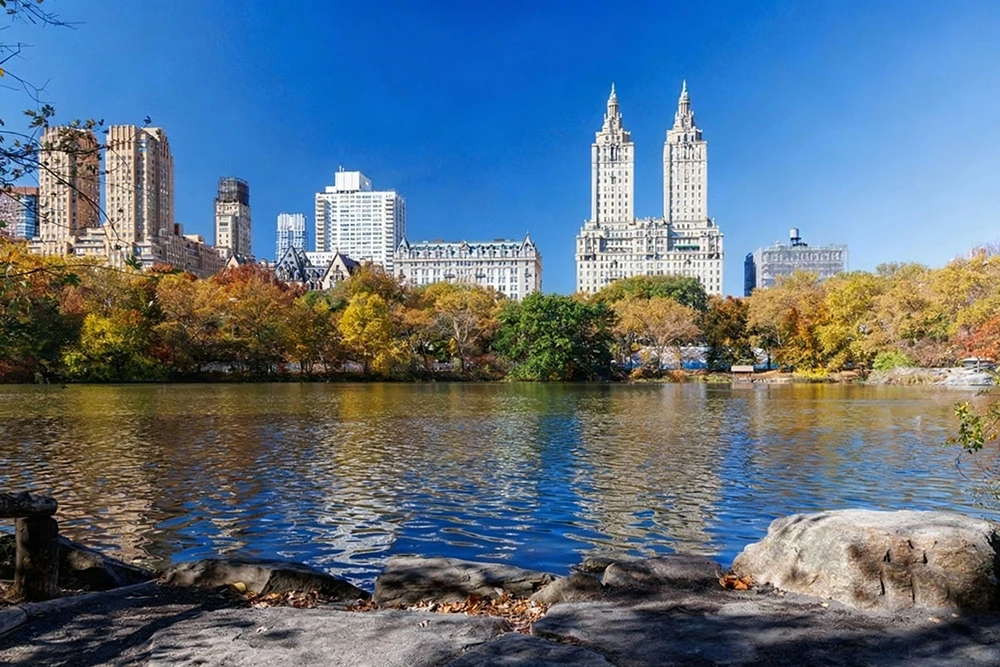
Brooklyn’s oldest house, before the skyline had a name
Hard to imagine this restless place beginning with a farmhouse, but there it sits the Wyckoff Farmhouse in Brooklyn, from 1652-low roof, rough beams, and shingles the color of toasted grain. The air can smell faintly of warm wood, and the light seems to fall softer there, while the traffic hum fades into the distance.
What gets me is how it changes the picture: the oldest building in the city is not a grand monument, but a working home from the days when fields spread where avenues run. I remember the creak of old floorboards and how my mind filled with wind moving through grass instead of sirens. It’s a rare peek at the city’s quiet beginnings, a stubborn knot in the wood grain of time, and a reminder that before glass towers learned to touch the clouds, we were just people with soil under our nails, building something simple and steady.
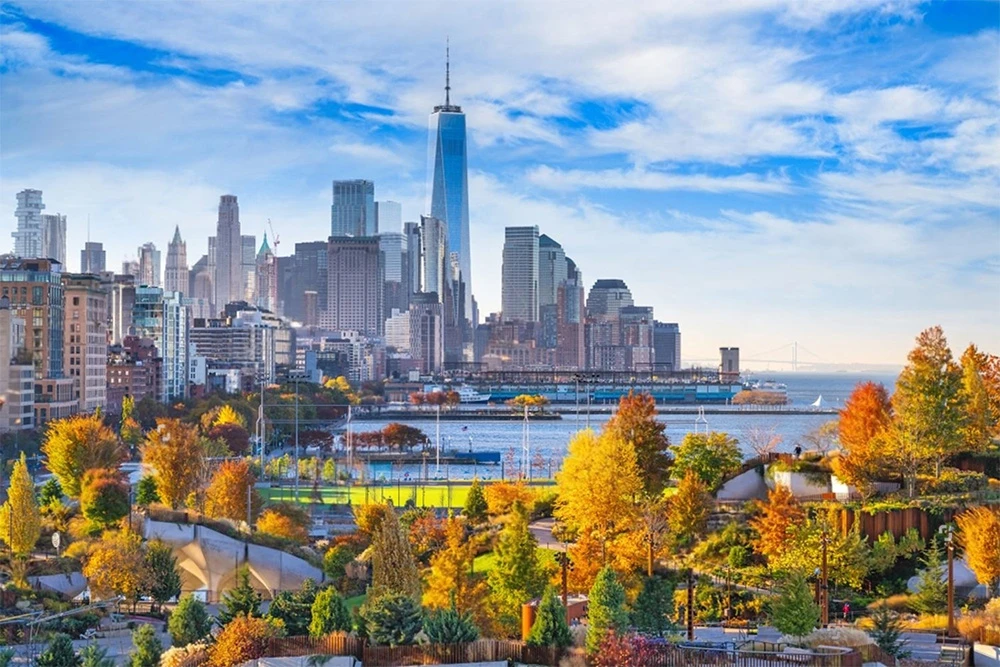
Patience and Fortitude, Stone Hearts of New York
Some days the wind has teeth, and those lions steady the block. Outside the New York Public Library, Patience and Fortitude sit through sleet that needles, summer that shimmers off the pavement, and the soft sigh of buses, as if weather were just another passing chapter. They’re so calm it’s contagious, like bookends keeping the city's unruly chapters from toppling.
I love that their names are the exact virtues this place keeps asking for. I remember a winter when their whiskers wore a dusting of sugar snow and strangers seemed gentler, as if borrowing a little of their mood. They’ve watched world wars, the Great Depression, and all our everyday tempests without flinching; no wonder they’ve become our unofficial mascots. Two quiet lighthouses on a sea of marble steps, reminding you to breathe, to keep turning the page.
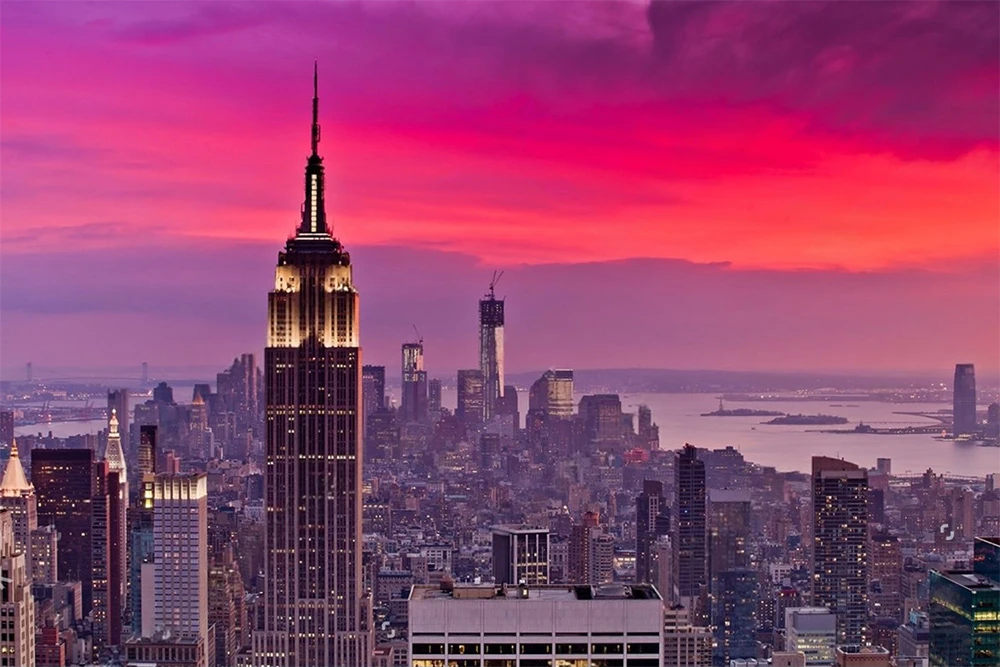
A subway swipe that lifts you into the sky
It still makes me laugh that a few bucks and a beep can send you floating above the city. The moment the ground slips away, my knees do that tiny wobble, and my stomach lifts like it remembered how to dream. Wind hushes against the glass, car horns fade to a soft hum, and suddenly the day feels wider than it did on the sidewalk.
The Roosevelt Island tramway glides out over the water and the skyline opens like a pop up book. You can see steam puffing from rooftops, taxis threading the streets like bright stitches, and the river sliding below with its quiet muscle. Inside, strangers turn into polite conspirators in wonder someone clutching flowers, someone in scrubs, someone yawning awake and it feels borrowed from an amusement park, except everyone’s holding a commute instead of cotton candy.
What gets me is the mix: a touch of vertigo, a pinch of everyday magic, and the reminder that this place still loves a surprise. For three minutes you’re both citizen and kid again, suspended between routine and wide eyed awe. When the car bumps back to earth, the ground feels steadier, and somehow the day feels taller.
A city park larger than the nation of Monaco
I still grin at the idea that a park can outsize a country. Central Park in New York City feels endless in the best way accordion players by the path, a whiff of pretzels and cut grass, the lake winking when the sun shifts. It’s like a green ocean with islands of rock, where strangers drift by and somehow the noise softens into something kind.
And yes, it’s bigger than Monaco. That little fact lands like a dare: 843 acres imagine tracing all of it in a single afternoon. Someone told me if you do, you’re a true urban explorer; I remember my legs humming at dusk once, not from conquering it, but from letting it change my sense of scale. The park turns the city inside out, reminding you that even in a place built for speed, there’s a quiet, soft republic of benches and breeze where time goes wide.

A bench where whispers find their way
I love when a city hands you a quiet magic trick. There’s a weathered bench in Central Park’s Shakespeare Garden that turns murmurs into shared breath. The air smells faintly of thyme and damp leaves, and the wood is cool under your fingers.
Sit at opposite ends, and the words skim the curve between you to arrive close and clear, as if a friend were leaning in. It’s the simplest physics turned tender, like a tin can telephone from childhood. You can whisper something shy and hear it come back brave.
What gets me most is how intimacy feels engineered into this spot, a secret stitched through wood. I remember sharing a small truth there, with bees fussing in the herbs and the city’s noise softened to a faraway hum. You walk away with a hush in your chest, surprised by how closeness can travel.
A city that holds whole homelands inside
I remember turning a corner and hearing a tin whistle thread through the clack of mahjong tiles, the air swinging from star anise and sesame to the warm sugar of a fresh cannoli. Lanterns rattled softly above the street, and someone laughed in three languages at once. It felt like borders had loosened their belts.
In New York, there are more Irish than in Dublin, and more Chinese than in most cities outside China, which explains why each neighborhood carries its own heartbeat. Chinatown, Little Italy, Koreatown whole worlds with parades that thrum the pavement and kitchens that smell like Sunday at your grandparents’, even if your grandparents were never from here. Sometimes it feels like an atlas folded into a single subway ride.
What gets me is the tenderness of it all: how memory and imagination meet on the same block. You taste what people carried across the ocean and what they invented to feel at home, stitched together like a bright patchwork quilt. Once, wandering between lanterns and church steps, I realized the surprise isn’t just how many came it’s how beautifully their traditions stayed, grew, and welcomed the rest of us in.
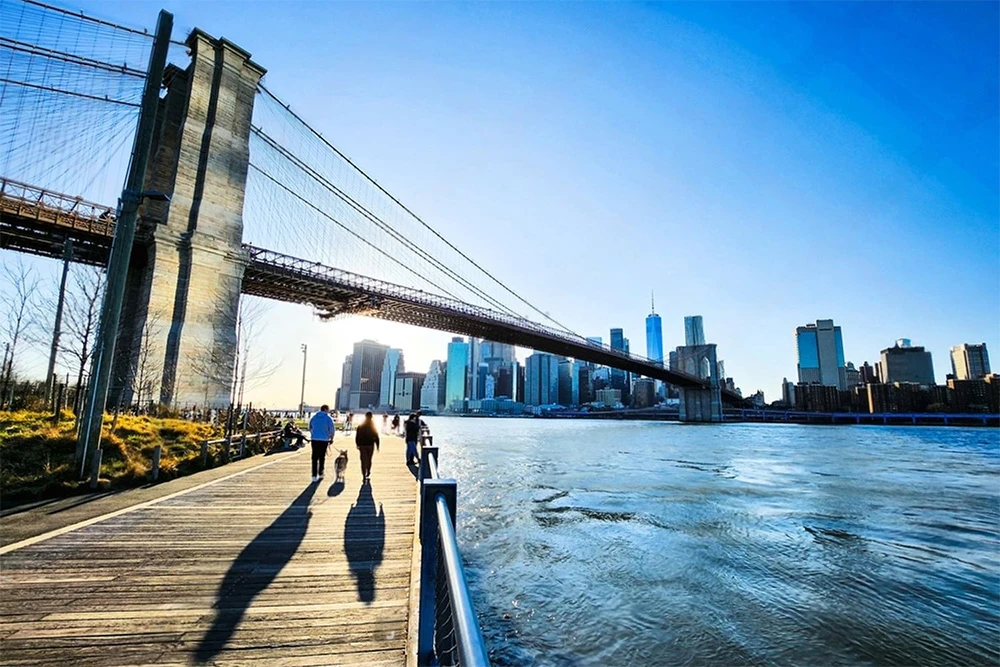
Older than Tower Bridge, proven by elephants and wine.
Funny thought the Brooklyn Bridge is older than London’s Tower Bridge. When it opened in 1883, the city was so jittery they led elephants across just to prove it was safe. I love that image: heavy footsteps keeping a calm rhythm, like drums steadying anxious hearts, while gulls and river wind tangled themselves in the steel.
And then there are the hidden wine cellars tucked into the stone, a cool hush where the city once kept its best bottles under lock and key. You can still spot them if you know where to look arched brick, old iron, the kind of secret that smells like damp limestone and quiet celebrations waiting to begin. It says so much about this place: even its pillars learned to cradle a toast.
Maybe that’s why the span feels so human to me the cables hum like harp strings in the wind, a little music for commuters and dreamers. It’s a bridge that earned trust with elephants and kept joy on ice, and somehow that mix of nerve and celebration still lingers in the air.
A secret car free oasis across the water
Funny how the world hushes the moment the engines fade no cars, just salt on the air and the soft clink of bicycles. Tucked corners bloom with thoughtful art, and old brick forts hold that iron and sea smell. In the orchards, leaves tick softly and hammocks sway with an easy patience. I remember finding a sculpture cradled between grass and wall, and feeling as if I’d wandered into a whisper meant for anyone willing to slow down.
There’s a slide that curls down the hill the city’s longest and when laughter rushes through it, the sound ripples like a silver stream. Most friends I know haven’t made it out here, which keeps the green feeling quietly secret. Governors Island is the kind of place that reminds me the city still has gentle corners; you leave with a quiet that stays with you.
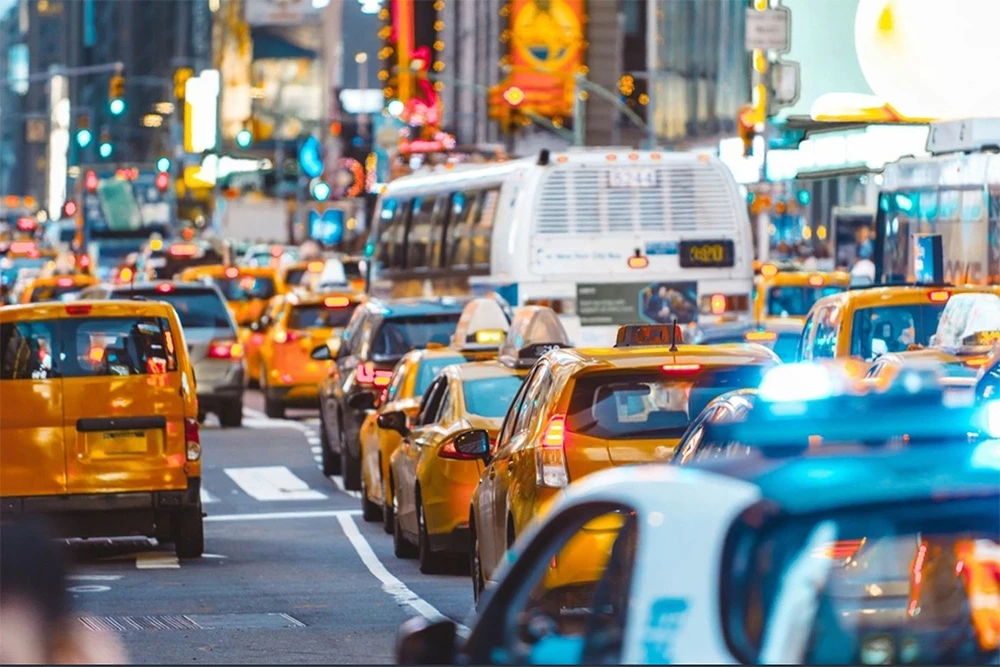
A priceless clock, and a city’s rendezvous
It always makes me smile that a simple phrase “Meet me at the clock” feels like a secret handshake. Under the vaulted constellations at Grand Central, that opal faced clock, estimated at $10-20 million, glows like a small sun above the rush. You can hear the soft chorus of footsteps and announcements tangling in the air, catch a drift of coffee and warm pretzels, feel the cool marble steady under everything, and there it is: wealth measured in carats and stories, steady and unshowy, keeping everyone’s time.
People have been choosing that spot for whispered reunions and brave hellos for generations, and I get why. I remember waiting there once, counting the amber minutes and feeling how kindness can live in a pause. So if someone says, “Meet me at the clock,” take it as a sign you’re inside the city’s romantic dream the one where time slows just enough for confessions and laughter, and the true value of the place is tallied in the hush between arrivals and departures.

Holding the moment, not the bathroom line
I still laugh a little when I admit it: some people wear adult diapers just to make it to midnight without budging. Out there, you can’t dart off to a restroom there aren’t any and if you step away, your spot is gone in an instant. The air stings, breath fogs, confetti dust sticks to chapstick, and everyone is pressed together like pages in a book.
In Times Square, I once realized it isn’t a punchline so much as plain devotion to a shared minute. Trading comfort for the chance to feel the countdown thrum through your ribs is both absurd and weirdly tender. When the numbers boom and the ball begins its slow glide, the block hushes, then erupts, and the warmth of strangers spills into the cold like light through a cracked door.
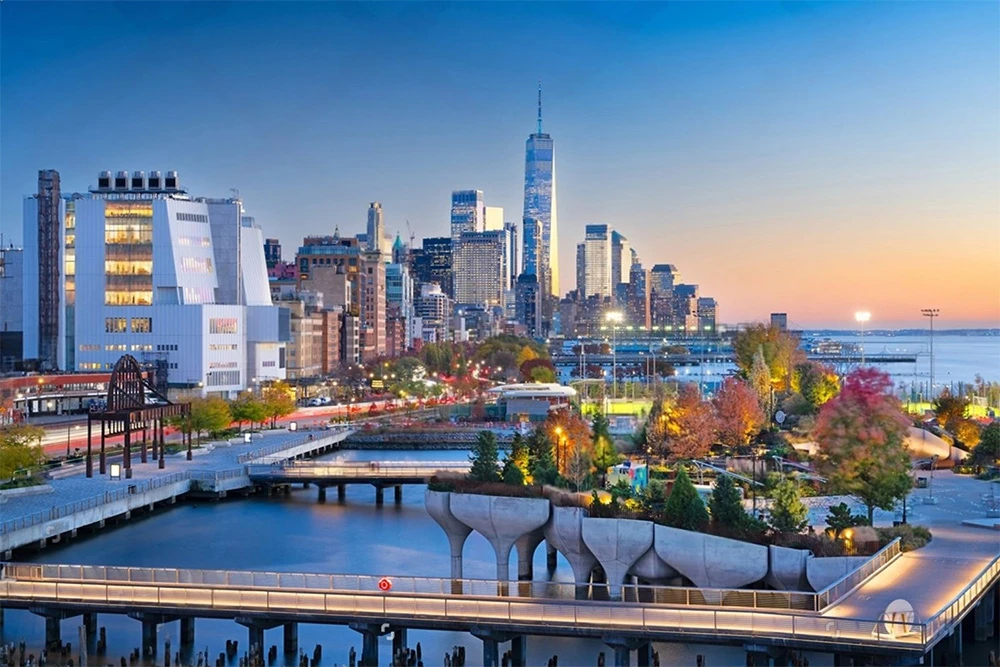
A park built over a city’s quiet graveyard
Sometimes the ground feels like it’s holding its breath. In late October, the air smells of damp leaves and roasted chestnuts, and a breeze moves through the trees. I remember pausing on the lawn, hearing a guitar drift across the path, and sensing a hush beneath all that everyday noise.
Under that grass lie thousands of people; before the park, this was a potter’s field. Every fall, after a hard rain, small sinkholes appear, and odd bumps rise in the lawn – a quiet reminder that the past isn’t buried evenly. It’s unsettling and tender at the same time, the kind of truth that makes you stand still for a moment.
Once, while wandering there, I found myself speaking softer, out of respect. The chess pieces clicked, a dog barked, someone laughed by the fountain, and all of it felt more precious for the company beneath. Washington Square Park is where joy and grief share the same green, and that mix somehow feels honest, the city being exactly itself.
An elder tree holding centuries and a shiver of legend
It felt like the air hushed when I passed that elm, the way rooms go quiet for elders. In Washington Square Park they call it the Hangman’s Elm, the oldest tree in the borough, and you can sense the years settled in its bark. Even with dogs yipping and subway breath rising from the grates, the shade beneath it feels cooler and steadier.
I remember pausing there at dusk, not spooked exactly just alert, as if the past were closer than usual. Some of its legends are dark, and somehow that whisper of danger gives the place a tender shiver instead of a chill. Knowing it has stood through centuries of the city’s change makes you stand up straighter for a second, palm on rough bark, listening for leaves that sound a little like memory.
A secret bar behind a phone booth
I still grin at the memory of an old phone booth that led to a room of low voices. Amber light, muffled jazz, the clean bite of citrus and rye in the air. Cocktails in slender coupes tasted both sharp and soft, and the password slipped between friends like a rumor.
What stays with me is how the past doesn't feel gone here, just unhurried and close by in the East Village. There’s a playful polish to that prohibition glamour velvet shadows, warm brass, names you want to say slowly. It made me realize that hidden fun is not a trend but a tradition, and for a moment the night felt like a small time machine.

Final thought
The hidden stories, the small details, and the unguarded human moments are where the truer city reveals itself. They show New York as it lives day to day, imperfect and generous in quiet corners. Taken together, these glimpses feel like a quilt of worn threads, warm and true. I’ll carry that feeling forward, walking a little slower, eyes open to wonder.


